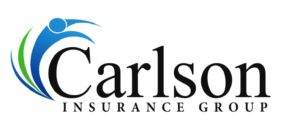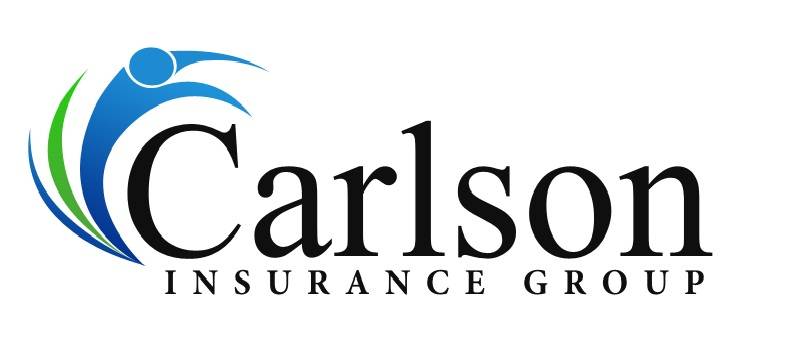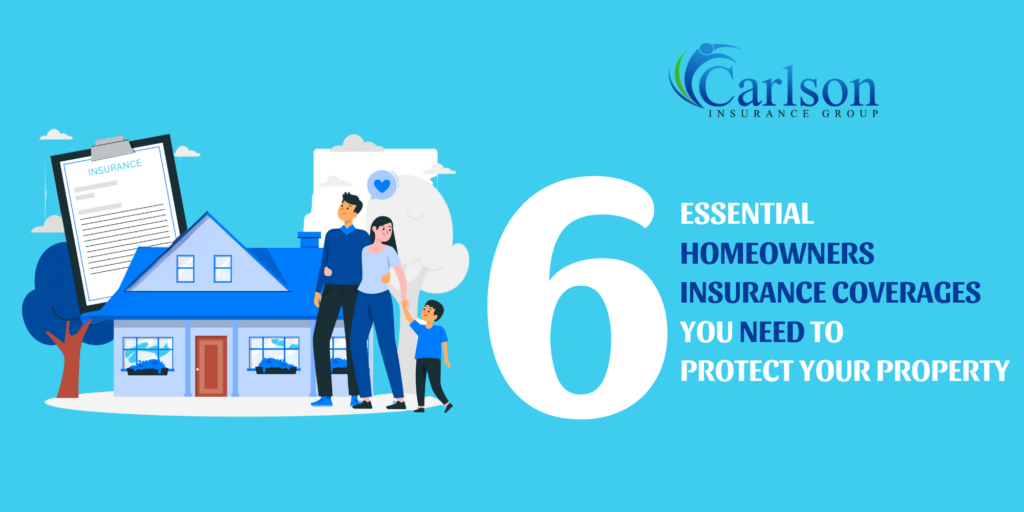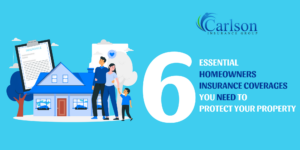Homeownership is a big milestone, but protecting your home requires planning and foresight. Homeowners insurance can save you from financial losses when the unexpected happens, but understanding what’s covered—and what’s not—is key to ensuring you’re fully protected.
Here’s a detailed look at six must-have homeowners insurance coverages that can offer peace of mind and financial stability.
Dwelling Coverage
Dwelling coverage is the foundation of homeowners insurance, covering the physical structure of your home—like walls, floors, ceilings, and built-in appliances. In the event of fire, severe storms, hail, or other covered perils, this coverage helps pay for repairs or even a complete rebuild of your home.
Why It Matters
Without adequate dwelling coverage, you could face steep out-of-pocket costs to rebuild. Ensure your dwelling coverage limit is high enough to cover the replacement cost of your home, not just its current market value. Replacement cost factors in the price of materials and labor in today’s market, which can be significantly higher than the home’s original price.
Pro Tip
Work with your insurance agent to keep this coverage up-to-date, especially if you make renovations or the cost of materials rises.
Personal Property Coverage
Personal property coverage protects your belongings within your home—like furniture, electronics, appliances, and personal items—if they’re stolen, damaged, or destroyed by covered events such as fire or theft. This coverage typically extends to items stolen from your car or while you’re traveling.
Why It Matters
The value of your personal items can add up quickly. Personal property coverage helps replace these items, but keep in mind the difference between actual cash value and replacement cost coverage:
Actual Cash Value (ACV): Covers your items minus depreciation.
Replacement Cost: Covers the amount it would cost to replace the items at today’s prices.
Pro Tip
For high-value items like jewelry, art, or collectibles, consider adding scheduled personal property coverage, which offers additional protection and higher limits.
Liability Coverage
Liability coverage protects you financially if you’re legally responsible for injuries or property damage to others. For example, if a guest slips and falls on your icy steps or your child accidentally damages a neighbor’s property, liability coverage helps pay for their medical expenses, repairs, and potential legal fees.
Why It Matters
Medical bills, legal fees, and settlements can be costly. Liability coverage typically starts at $100,000 but can go up to $500,000 or even higher. If you have significant assets or savings, it’s worth considering a higher limit or an umbrella policy, which extends liability protection beyond your standard policy limits.
Pro Tip
Many policies offer “no-fault” medical coverage, which can cover minor injuries to guests without the need for a lawsuit.
Additional Living Expenses (ALE) Coverage
Additional Living Expenses (ALE) coverage, sometimes known as “loss of use” coverage, helps cover extra costs if your home becomes temporarily uninhabitable due to a covered event, like a fire or severe storm. ALE can cover expenses for hotel stays, food, and even boarding for pets.
Why It Matters
ALE coverage allows you to maintain your quality of life during the disruption, so you won’t have to bear the financial burden of unexpected living expenses while your home is being repaired.
Pro Tip
Check your policy for the duration and amount of ALE coverage. Some policies provide a percentage of your total dwelling coverage, while others have time or dollar limits. Make sure the coverage will be sufficient if repairs take longer than expected.
Flood Insurance
Flooding is one of the most common and costly disasters but isn’t covered under standard homeowners insurance. Flood insurance is crucial, especially if you live in a high-risk flood zone. This separate policy covers structural damage and, in some cases, your personal belongings due to flooding events.
Why It Matters
Floods can happen anywhere, and repairs are often extensive and expensive. Even a few inches of water can cause significant damage, and without flood insurance, you would need to cover these costs out of pocket.
Pro Tip
The Federal Emergency Management Agency (FEMA) provides flood insurance through the National Flood Insurance Program (NFIP), though private insurers offer policies as well. Be aware that flood insurance has a 30-day waiting period, so plan ahead if you’re considering adding it.
Earthquake Coverage
Like flood insurance, earthquake coverage is usually not included in standard homeowners policies and must be purchased separately. This coverage helps with repairs or rebuilding costs if your home or belongings are damaged in an earthquake.
Why It Matters
Earthquakes can cause catastrophic damage, and without insurance, you could be left to cover costly repairs yourself. Earthquake insurance is especially crucial in high-risk areas, but even homeowners in low-risk zones should consider it since earthquakes can occur in many parts of the U.S.
Pro Tip
Earthquake insurance often has a high deductible based on a percentage of your home’s value, so be prepared for potentially higher out-of-pocket costs if you need to make a claim. However, the protection is often well worth the expense for peace of mind.
Final Thoughts
While basic homeowners insurance policies offer some level of coverage, customizing your policy to include these essential protections can safeguard you and your home against the unexpected. Take time to assess the right limits and add-ons for your needs, and work with your insurance provider to craft a policy that protects not just your property, but also your peace of mind.






